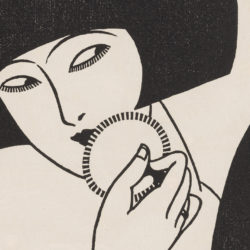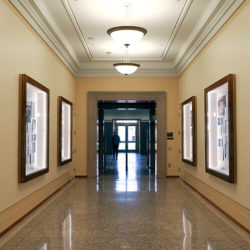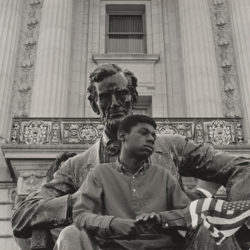For Bollywood posters, a vivid new life
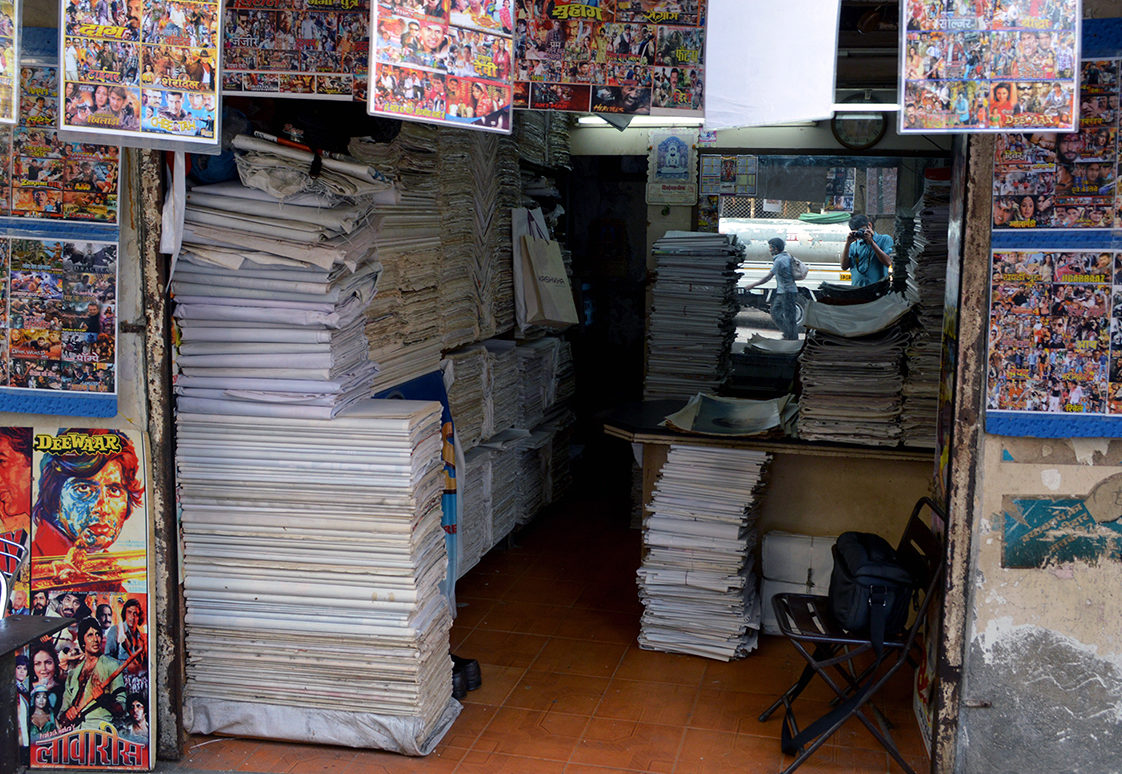
This Mumbai shop is where Sugata Ray acquired many posters for Love Across the Global South. (Photo courtesy of Sugata Ray)
To properly display the posters, there was one big problem to overcome.
“Every time we picked up a poster, a chunk would come out,” Ray said.
Enter the Library’s Preservation Department.
Though fragile, the posters, overall, were in decent shape when Library conservators Emily Ramos and Erika Lindensmith got their hands on them.
The preservation process, carried out in the basement of Doe Library in a vast room filled with tools and equipment of various shapes and sizes, might sound complicated to an outside observer.
But when done right, its results look effortless.
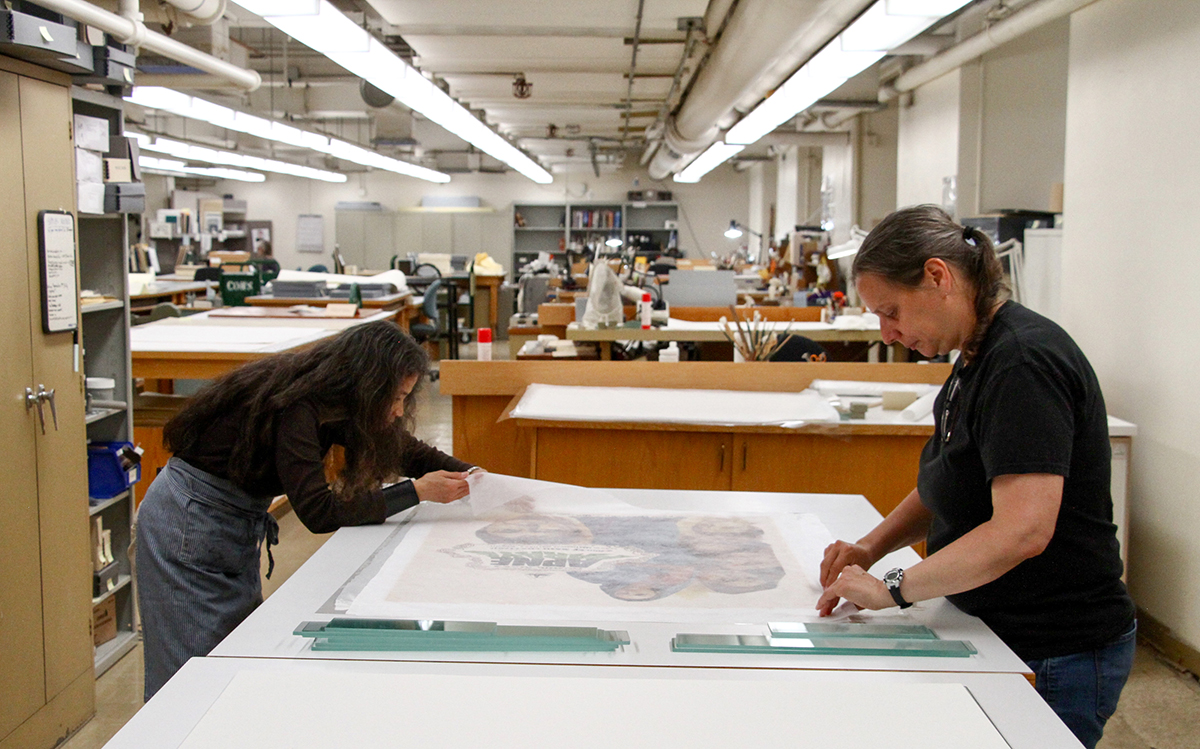
Library conservators Emily Ramos, left, and Erika Lindensmith preserved 10 posters for Love Across the Global South.
“We try to make it as unobtrusive as possible,” said Hannah Tashjian, head of the department’s Conservation Treatment Division.
The first step? Dry-cleaning.
No, you won’t find any washing machines down here: Instead, the conservators gently remove grime with a rubber sponge.
After testing the inks by using a small drop of water to make sure they won’t bleed, some of the posters are humidified. They came to the Preservation Department rolled up, so the humidification process allows the posters to gently flatten, preparing them for display.
The posters dry under weight for a few days — the longest part of the process — before the mending begins.
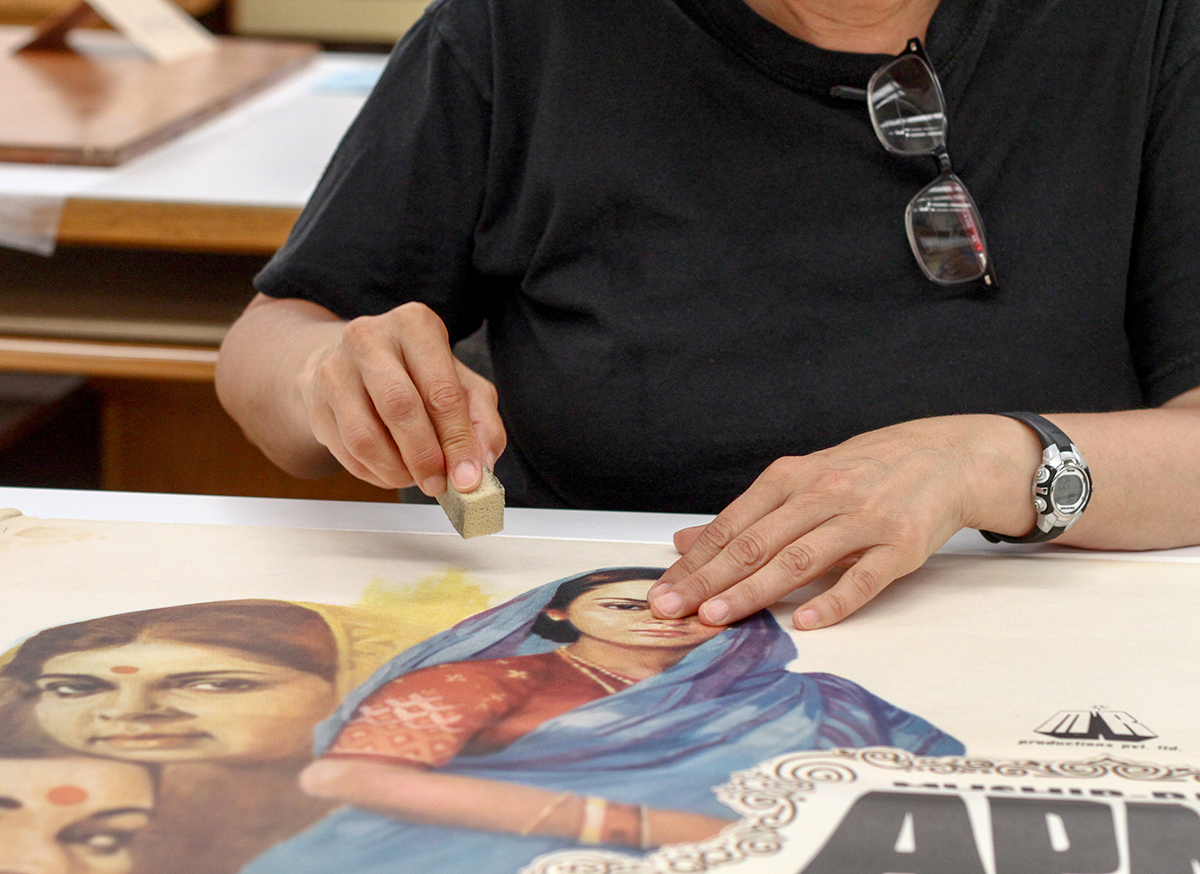
In the dry-cleaning process, Library conservators use a rubber sponge to remove surface grime.
To fix the tears, the conservators use Japanese paper and Japanese wheat starch paste. Why Japanese paper? Not only is it strong, but when used to make repairs, it’s virtually translucent.
“We don’t want our mends to distract from the artwork,” Tashjian said.
Posters that will be framed are given paper hinges, for mounting. Others are encapsulated in plastic, a process that requires a special machine that seals the edges using ultrasonic waves.
Then — well, that’s a wrap.
All told, the conservators worked on 10 Bollywood posters, which took nearly 40 hours to preserve.
How does it feel to see the end result?
“It’s satisfying to see it look better than it did before,” Lindensmith said.
“That’s the best part,” added Ramos.
And the curators agree. “They did an amazing job,” Ray said.
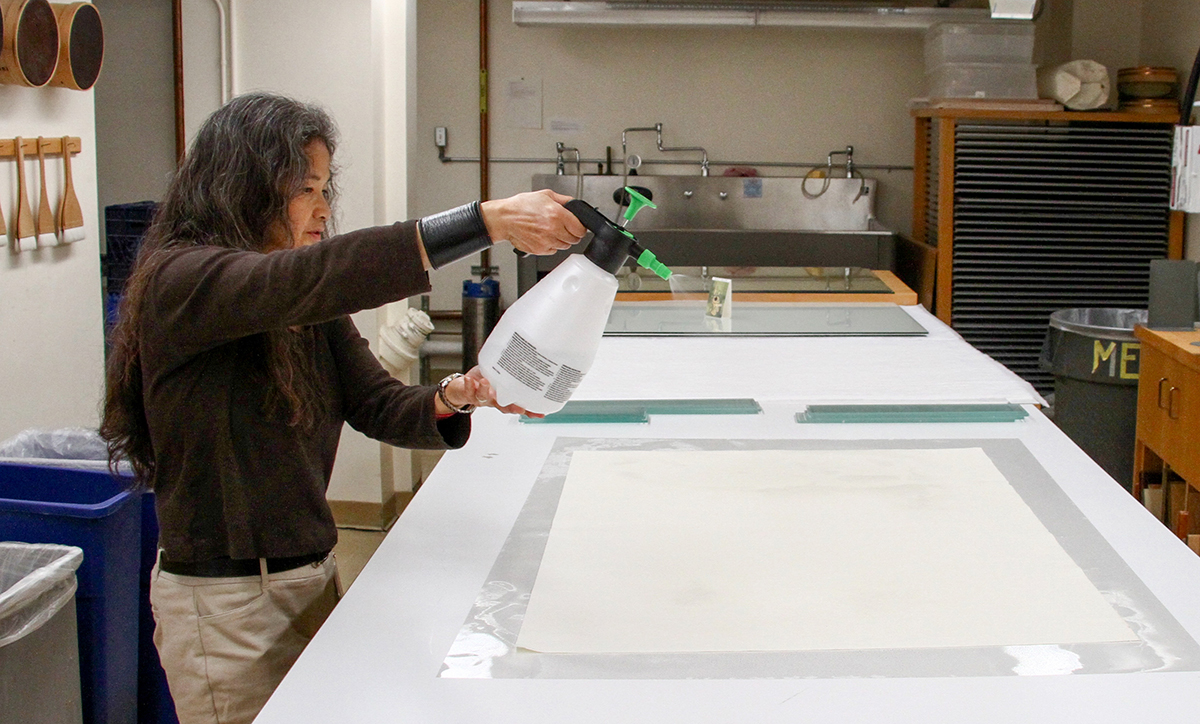
Conservators use purified water in the humidification process. Humidification flattens the curled-up posters.
Story by Tor Haugan
Photos by Cade Johnson for the University Library
Oct. 16, 2017

